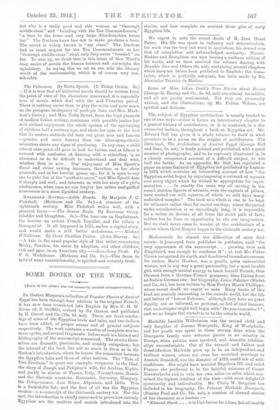The subject of Egyptian architecture is usually treated in one
of two ways—either it forms an introductory chapter to a general history of architecture, or it is scattered, in a dis- connected fashion, throughout a book on Egyptian art. Mr. Edward Bell has given it a whole volume to itself in what promises to be a series on the origins of architecture. The little hook, The Architecture of Ancient Egypt (George Bell and Sons, 6s. net), is finely printed and published, with a great number of photographs; and to be copiously illustrated is, in a closely compressed account of a difficult subject, to win half the battle. As an appendix Mr. Bell has reprinted a paper on some features of Egyptian art published by Lepsius in 1872, which contains an interesting account of how " the Egyptian artist began by superimposing a network of squares over every object which he wished to appropriate for repre- sentation. . . . In exactly the same way all carving in the round, statues, figures of animals, even the capitals of pillars, were worked out with squares, of which we still have many unfinished samples." The book as a whole is one to be kept for reference rather than for casual reading ; where the period under consideration is so exceedingly long, it is impossible for a writer to deviate at all from the strict path of fact ; neither has he time or opportunity to stir our imagination. But we shall never cease to wonder at the architecture of a nation whose third Empire began in the sixteenth century B.C.






































 Previous page
Previous page